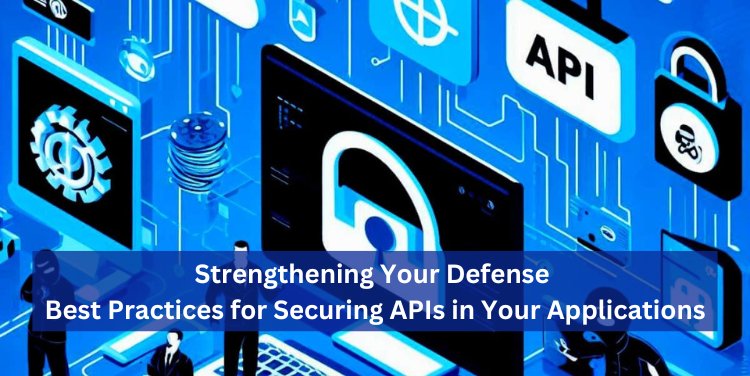Strengthening Your Defense: Best Practices for Securing APIs in Your Applications

In the age of interconnected systems and digital ecosystems, Application Programming Interfaces (APIs) play a crucial role in facilitating communication and data exchange between different software components. However, the openness and accessibility of APIs also make them a prime target for attackers seeking to exploit vulnerabilities and gain unauthorized access to sensitive data. Securing APIs is therefore paramount to safeguarding the integrity, confidentiality, and availability of your applications and data. In this blog, we'll explore best practices for securing APIs to mitigate risks and protect against potential threats.
1. Authentication and Authorization
Implement robust authentication mechanisms to verify the identity of users and ensure that only authorized individuals or systems can access your APIs. Use industry-standard protocols such as OAuth 2.0 or OpenID Connect to enable secure authentication and authorization workflows. Additionally, enforce granular access controls to restrict access to sensitive resources based on user roles, permissions, and scopes.
2. Use HTTPS for Secure Communication
Encrypt all communications between clients and your API servers using HTTPS (HTTP over SSL/TLS) to prevent eavesdropping, tampering, and man-in-the-middle attacks. Obtain and install SSL/TLS certificates from trusted Certificate Authorities (CAs) to establish secure connections and protect data in transit. Regularly update and patch your SSL/TLS implementation to mitigate known vulnerabilities and ensure the integrity of your encryption protocols.
3. Input Validation and Data Sanitization
Apply strict input validation and data sanitization measures to prevent injection attacks such as SQL injection, XSS (Cross-Site Scripting), and CSRF (Cross-Site Request Forgery). Validate and sanitize all user-supplied data, including query parameters, request headers, and payloads, to remove malicious content and mitigate the risk of code injection or execution vulnerabilities. Use parameterized queries for database access and escape or encode user input to prevent injection attacks.
4. Rate Limiting and Throttling
Implement rate limiting and throttling mechanisms to control the volume and frequency of API requests and protect against brute force attacks, denial-of-service (DoS) attacks, and API abuse. Set reasonable limits on the number of requests per user, IP address, or API key within a specified time window, and monitor request patterns for anomalous behavior. Use caching and content delivery networks (CDNs) to offload traffic and improve performance while mitigating the impact of excessive requests.
5. Logging and Monitoring
Enable comprehensive logging and monitoring capabilities to track API activity, detect suspicious behavior, and respond to security incidents in real-time. Log relevant information such as request metadata, user actions, and error messages to facilitate forensic analysis and audit trails. Use centralized logging platforms and security information and event management (SIEM) systems to aggregate and analyze log data, generate alerts, and automate incident response workflows.
6. API Security Testing
Regularly conduct security assessments and penetration tests to identify and remediate vulnerabilities in your APIs before they can be exploited by attackers. Perform static code analysis, dynamic application security testing (DAST), and penetration testing to uncover security flaws such as injection vulnerabilities, insecure authentication mechanisms, and sensitive data exposure. Utilize automated testing tools and manual testing techniques to assess the security posture of your APIs comprehensively.
Securing APIs is essential for protecting the confidentiality, integrity, and availability of your applications and data in today's interconnected digital landscape. By following best practices such as implementing strong authentication and authorization mechanisms, using HTTPS for secure communication, validating input data, enforcing rate limits, logging and monitoring API activity, and conducting regular security testing, you can mitigate risks and defend against potential threats effectively. Prioritize API security as an integral part of your overall application security strategy to safeguard your organization's assets and maintain the trust of your users and stakeholders.
What's Your Reaction?















